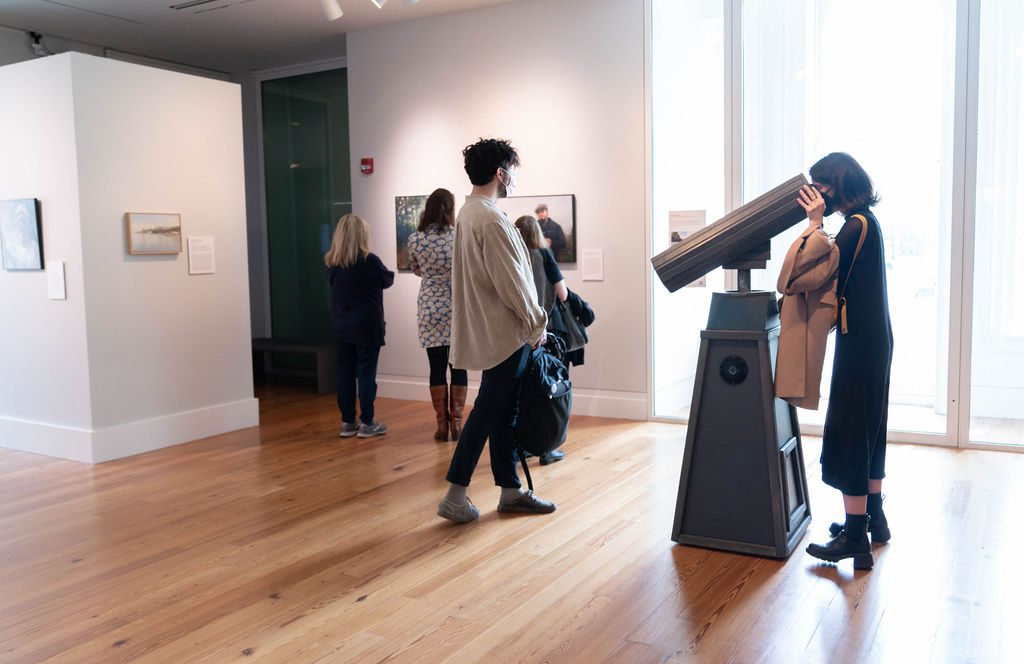
- This event has passed.
Vulnerable Landscapes: Artist Talk
Saturday, October 14, 2023, 2:00 pm – 4:00 pm
Free with Museum Admission
Join us for a panel discussion around the relationship between the built and natural environment with James Vincent Brice, Nathan Kensinger, Sarah Nelson Wright, and Nate Dorr whose work is featured in Vulnerable Landscapes. Moderated by Idea Reid.
Idea Reid is a student at Barnard College, dancer, and activist from Staten Island. She co-founded an environmental justice club at her high school, leading rallies, workshops, and climate justice teach-ins with the former NYC Director of Sustainability. Idea fights for climate policy as an intern at the Climate Museum, brings attention to the injustice facing Staten Island’s waterfront as a member of the Environmental Justice Coalition, and conveys her passion for people and the earth through art as a member of the Young Lordes Collective.
Born and raised in NYC, James Vincent Brice is a designer and engineering-scientist pursuing a dual Master of Architecture and Master of Science in Civil and Environmental Engineering at the Massachusetts Institute of Technology (MIT). Before MIT, he worked as a zookeeper and aquarist for the Staten Island Zoo, responsible for the care of both terrestrial and aquatic animal life. Pulling from this professional experience and a BS in Applied Physics (RPI ‘16), he explores the integration of architecture, urban ecology and environmental fluid mechanics. His research focuses on wave-structure interaction and the design of nature-based coastal protection strategies. By applying knowledge of biophysical interactions in aquatic ecosystems to urban waterfront adaptation, he’s investigating how climate-adaptive design can strengthen a multispecies understanding of coastal community resilience.
Nathan Kensinger is an interdisciplinary artist and journalist whose work explores hidden urban landscapes, off-limits industrial structures, forgotten waterways, environmental disasters, and coastal communities endangered by sea level rise and climate change. He has been documenting New York City’s coastline for the past 20 years, and his film Managed Retreat, about the NY State buyout program, was featured in the Staten Island Museum’s exhibit “Yes, And.” His photo essays, films, public art projects and video installations have been exhibited and screened internationally at museums and galleries, including the Museum of the City of New York, Brooklyn Museum, Queens Museum, National Museum of Cinema in Italy, Australian Centre for the Moving Image, and Danish Film Institute. Learn more.
Sarah Nelson Wright is a Brooklyn based artist and educator from the San Francisco Bay Area. She creates media projects about the urban experience that explore the changing city and investigate avenues for intervention. Her work encompasses video, installation, interactive media, and public art.
Her projects have been exhibited internationally in galleries and festivals, including the Queens Museum (NY), Staten Island Museum (NY), Museum of Contemporary African Diasporan Arts (New York), Mostra de Artes (Sao Paulo, Brazil), ACVic Center for Contemporary Arts (Vic, Spain), UnionDocs (NY), Art at the BlueLine (NY), Conflux Festival (NY), Dumbo Arts Festival (NY), Proteus Gowanus (NY), AHA Fine Arts (NY), and Radiator Gallery (NY). Learn more.
Nate Dorr’s work seeks out discontinuities, fault lines, and interstitial spaces, all the places where the unseen city springs unexpectedly into view and deep interactions between architecture, environment, history, and socioeconomic systems may be more readily observed. Learn more.
Major sponsorship of Vulnerable Landscapes is provided by the Lily Auchincloss Foundation and by National Grid.
Vulnerable Landscapes is supported by Bloomberg Philanthropies.
